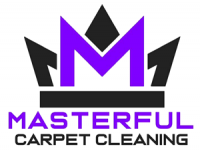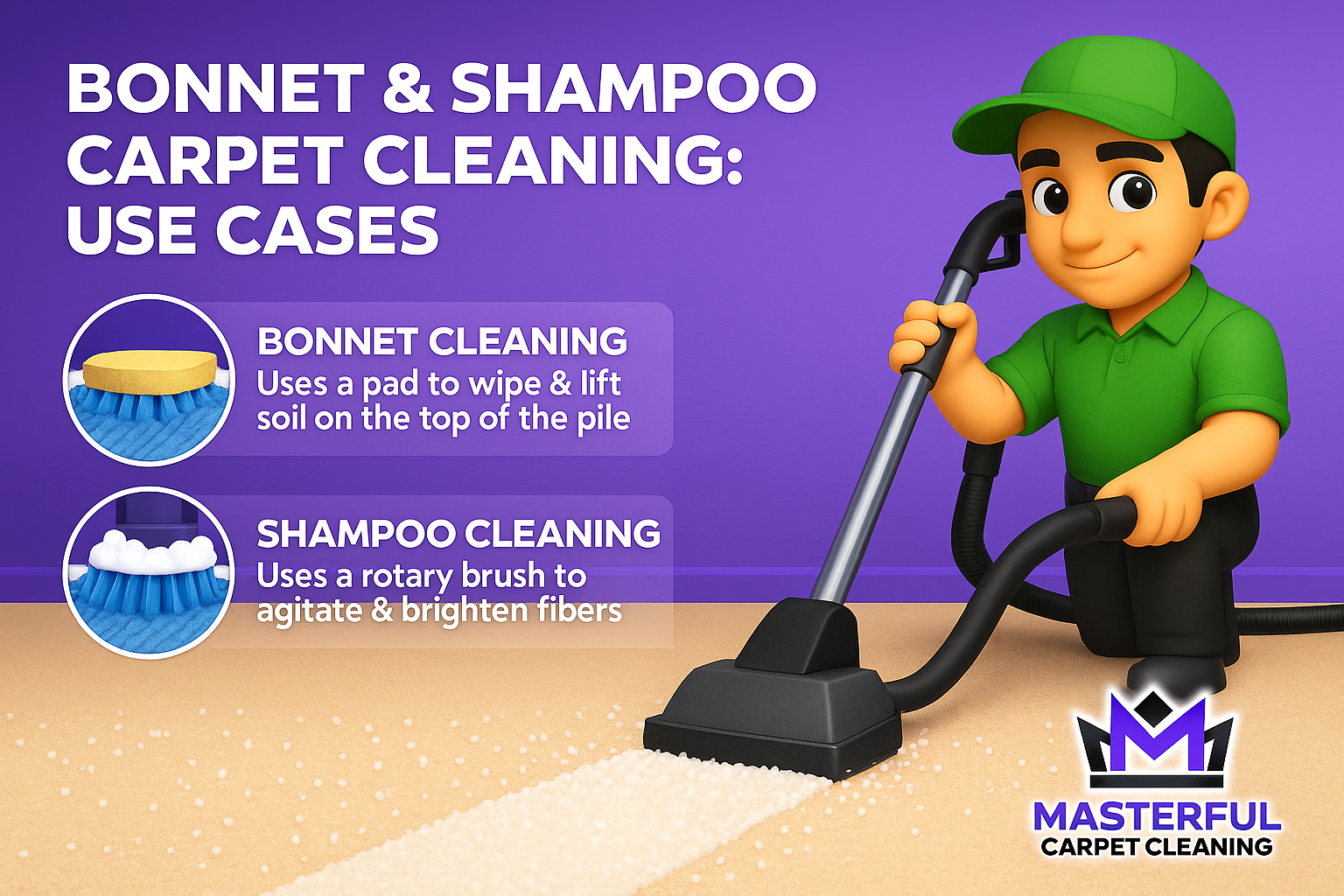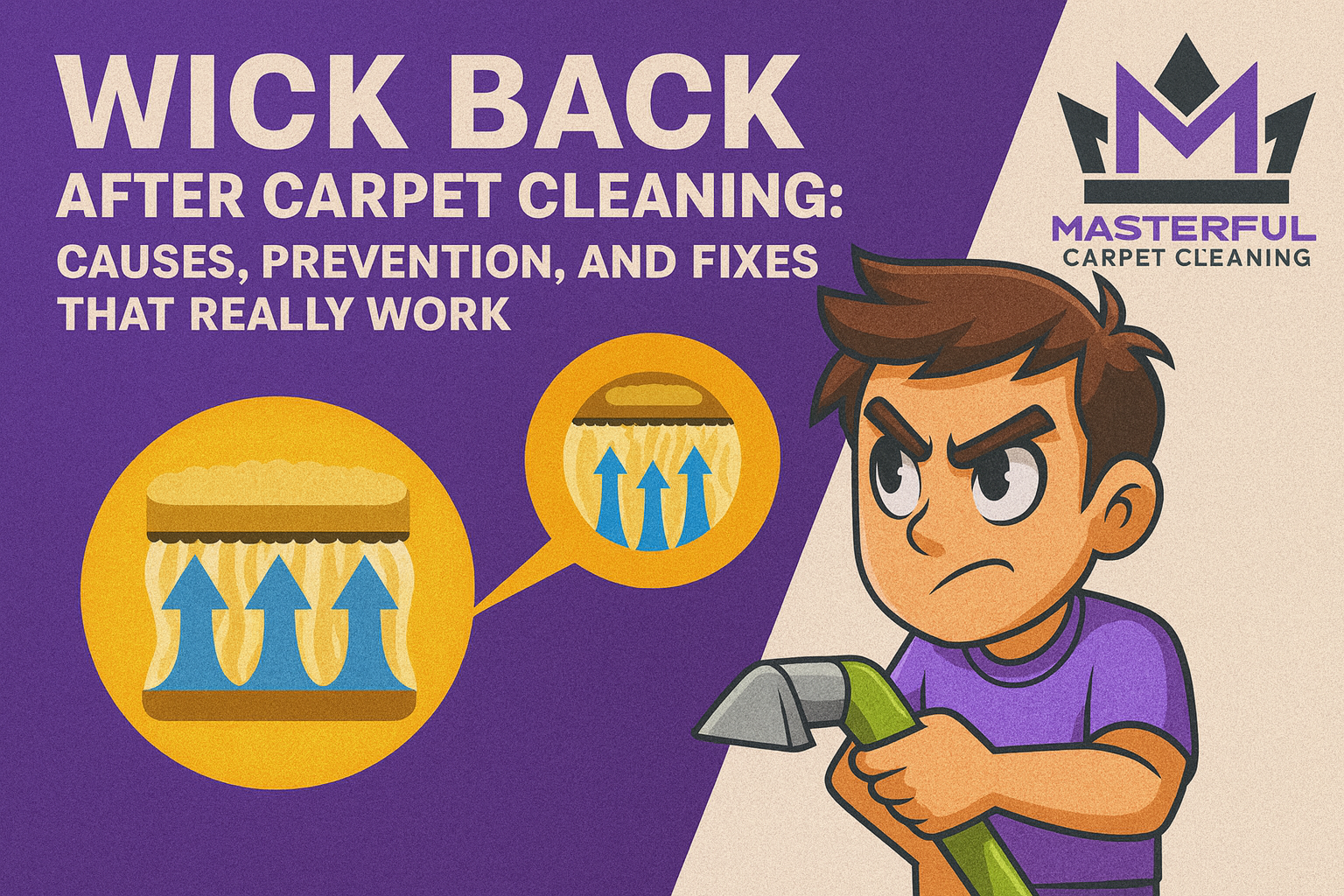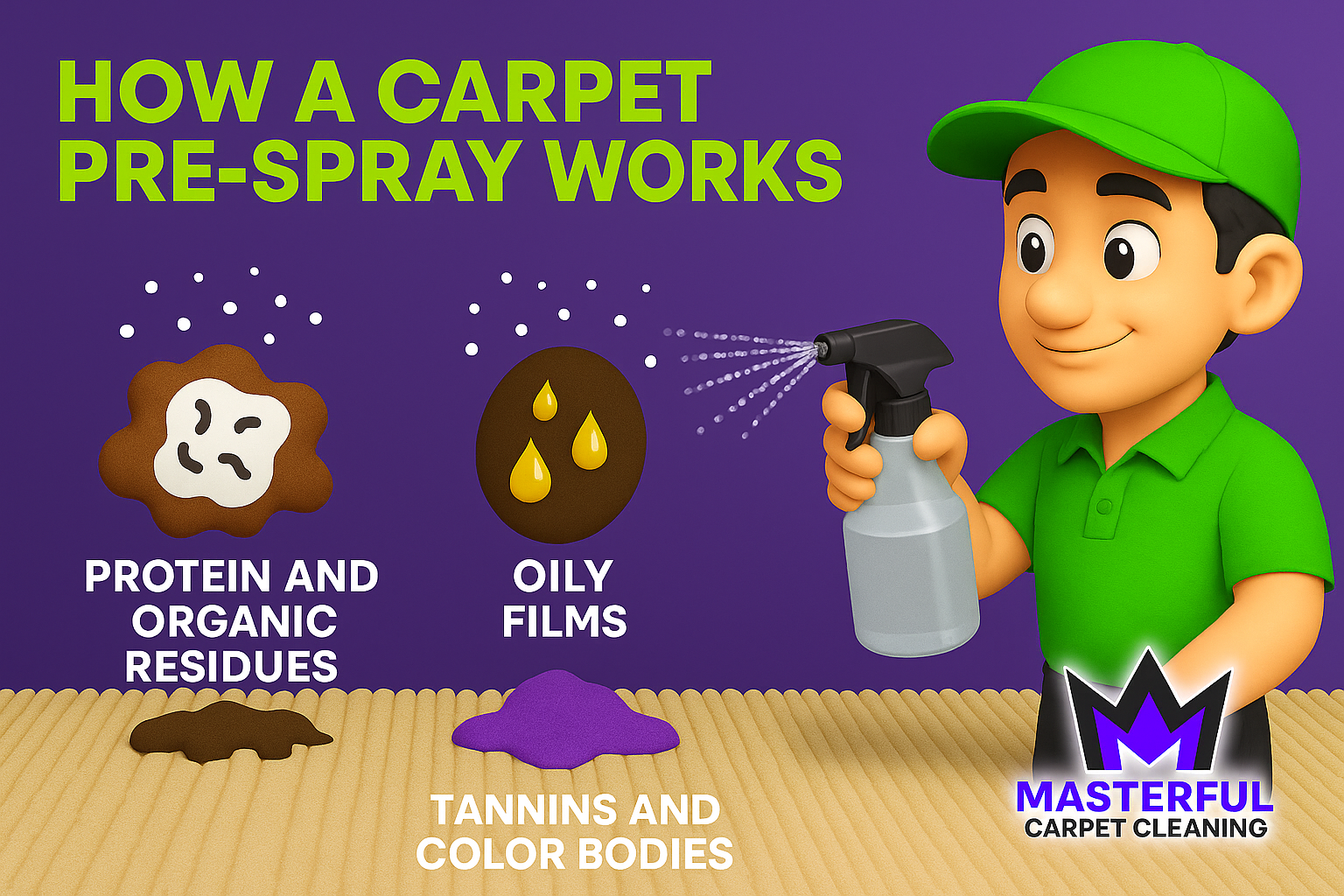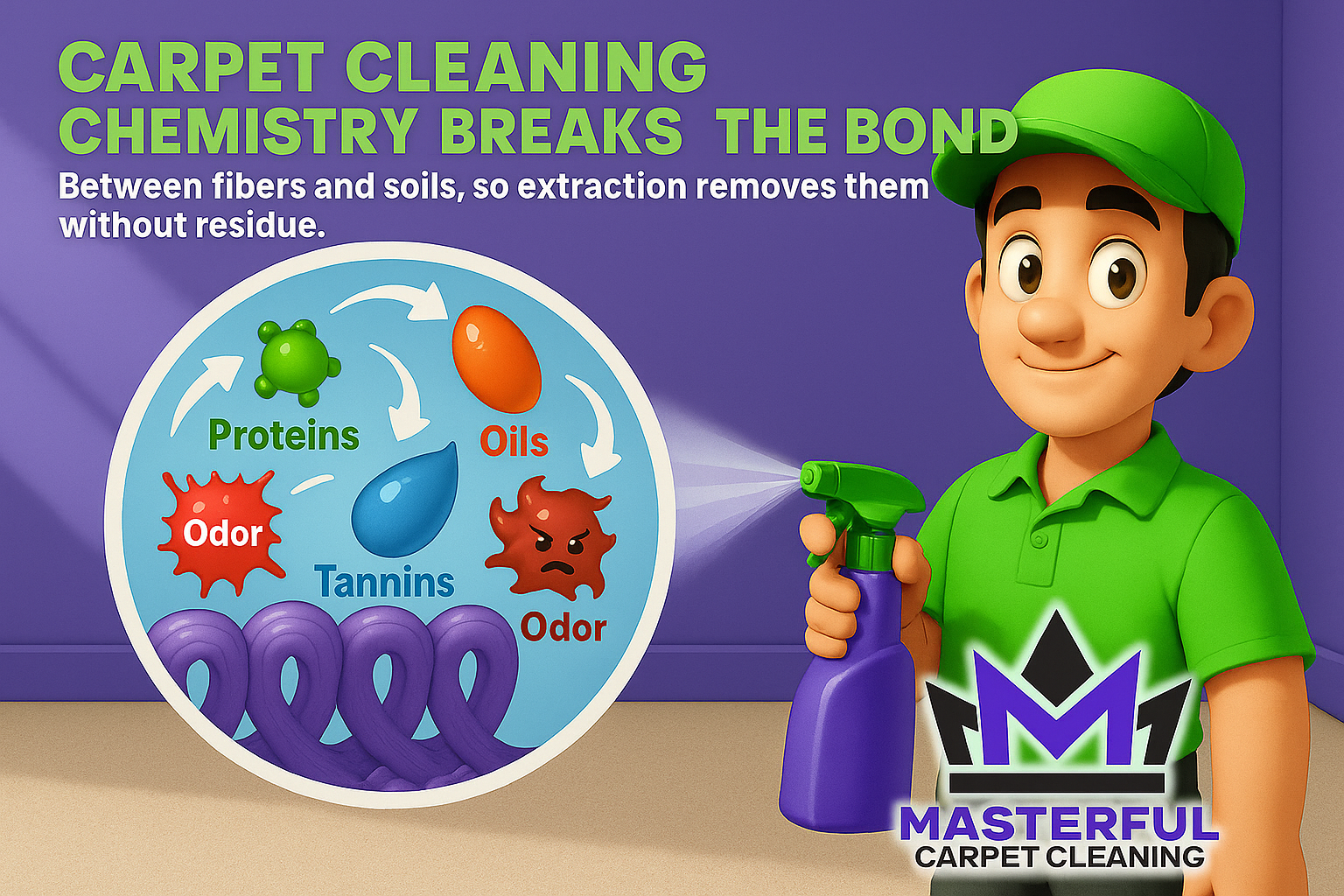The Challenge of Allergy Season in Amity, Oregon
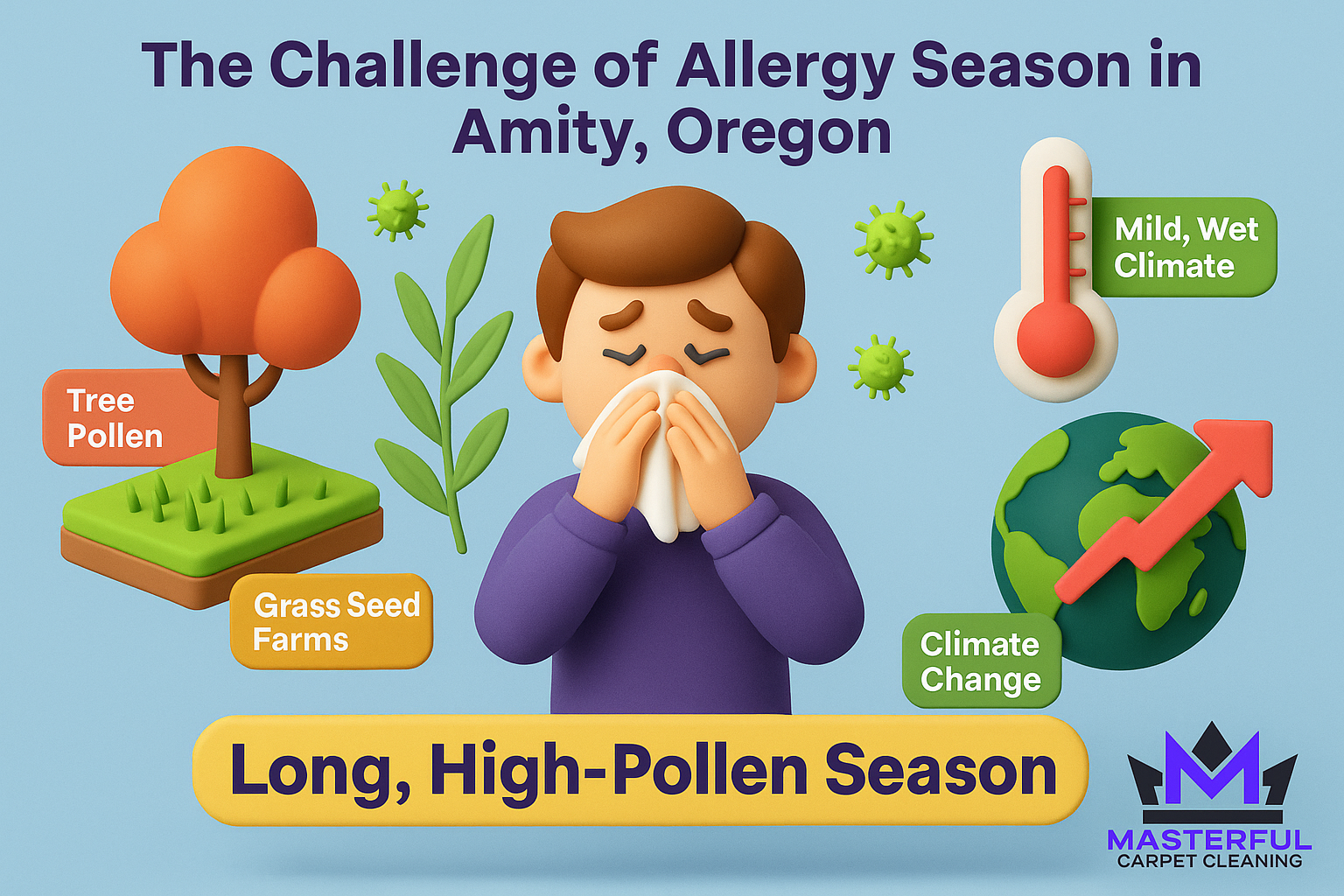
If you live in Amity or anywhere else in Oregon’s lush Willamette Valley, you know allergy season isn’t just a season, it’s practically a way of life. Our region is often called the “grass seed capital of the world” because roughly 1,500 farms cultivate grass for seed, releasing massive amounts of pollen into the air. Combine that with a mild, wet climate, and you get a recipe for what allergists refer to as a long, high‑pollen season, some experts note that symptoms can stretch from February through Halloween. Climate change exacerbates this by warming up spring earlier and raising CO₂ levels, which encourages plants to produce more pollen. In other words, if you feel like you’ve been sneezing more in recent years, you’re not imagining it.

Why Oregon’s Pollen Season Is Different
Oregon’s allergy cycle is extended compared to many other states. Tree pollen dominates in winter and spring; grass pollen peaks in June; and weed pollen becomes the main offender in autumn. Because we rarely have a hard frost, seasonal allergies can start as early as December and continue into late November, leaving residents with little relief. Peak pollen months include March, April, June, and September, so those planning outdoor weddings or events should take note.
You might wonder what specific plants cause the most misery. In Oregon, common allergen culprits include Bermuda grass, fescue, and orchard grass; weeds like plantain weed and ragweed; and a variety of trees such as spruce, cypress, hazelnut, juniper, sycamore, cottonwood, ash, pecan, and locust. Each type of pollen has its own release window, which means you could be sensitive to multiple waves of allergens.
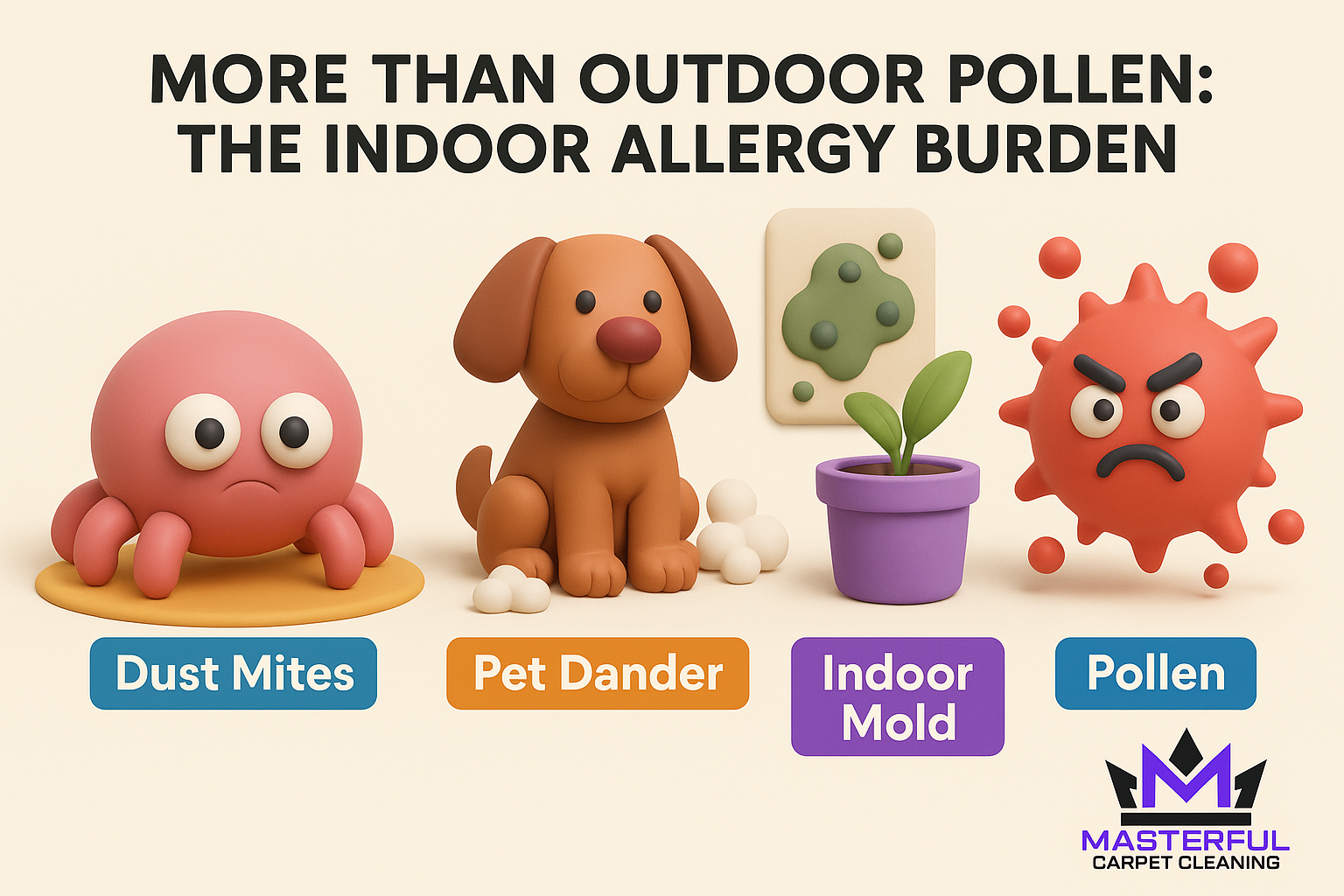
More Than Outdoor Pollen: The Indoor Allergy Burden
While outside pollen grabs the headlines, indoor allergens quietly wreak havoc on your sinuses. Researchers note that eight out of ten Americans are exposed to dust mites, and six out of ten are exposed to cat or dog dander. These microscopic creatures and particles settle into carpets, bedding, stuffed toys, and upholstery. Indoor mold grows in damp areas like bathrooms and basements. Combine these with pollen tracked indoors on shoes and clothing, and you have a cocktail of irritants that can trigger sneezing, coughing, congestion, itchy eyes, and even asthma.
To fight allergies effectively, you need a two‑pronged approach: minimize exposure to outdoor allergens and control indoor allergens.
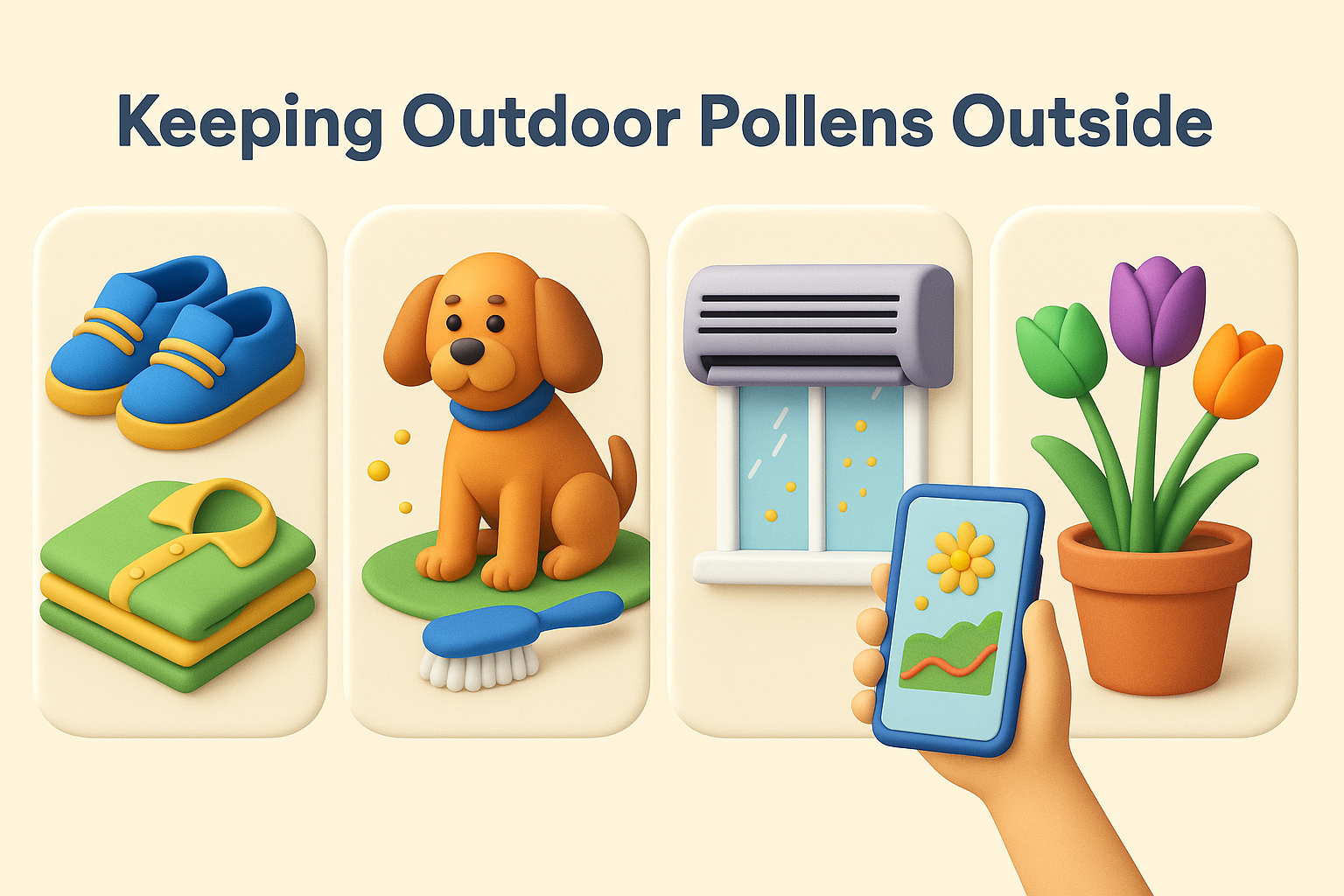
Keeping Outdoor Pollens Outside
Remove shoes and change clothes. Pollen grains cling stubbornly to shoes, pants, and hair. Take shoes off at the door and slip into indoor slippers. After mowing the lawn or hiking, change clothes and shower to rinse pollen off your skin and hair.
Groom your pets. Cats and dogs are pollen magnets. Brush pets outside and bathe them regularly. Weekly bathing cuts down on dander as well.
Close windows during high‑pollen hours. Early morning and windy afternoons typically have the highest pollen counts. Run air conditioning instead, using filters with high Minimum Efficiency Reporting Value (MERV) ratings to trap pollen. Keep your HVAC system well maintained; dirty filters and ducts recirculate allergens.
Monitor pollen forecasts. Websites and smartphone apps provide daily pollen counts. When the count is high, limit outdoor activities and plan workouts for the evening when pollen levels dip.
Use doormats and entry rugs. Place washable rugs at every entrance to catch pollen and dirt. Clean these rugs weekly with a HEPA vacuum.
Plant wisely. If you have allergies, avoid planting highly allergenic trees or weeds near your home. Instead, choose low‑pollen plants like azaleas, begonias, and tulips.
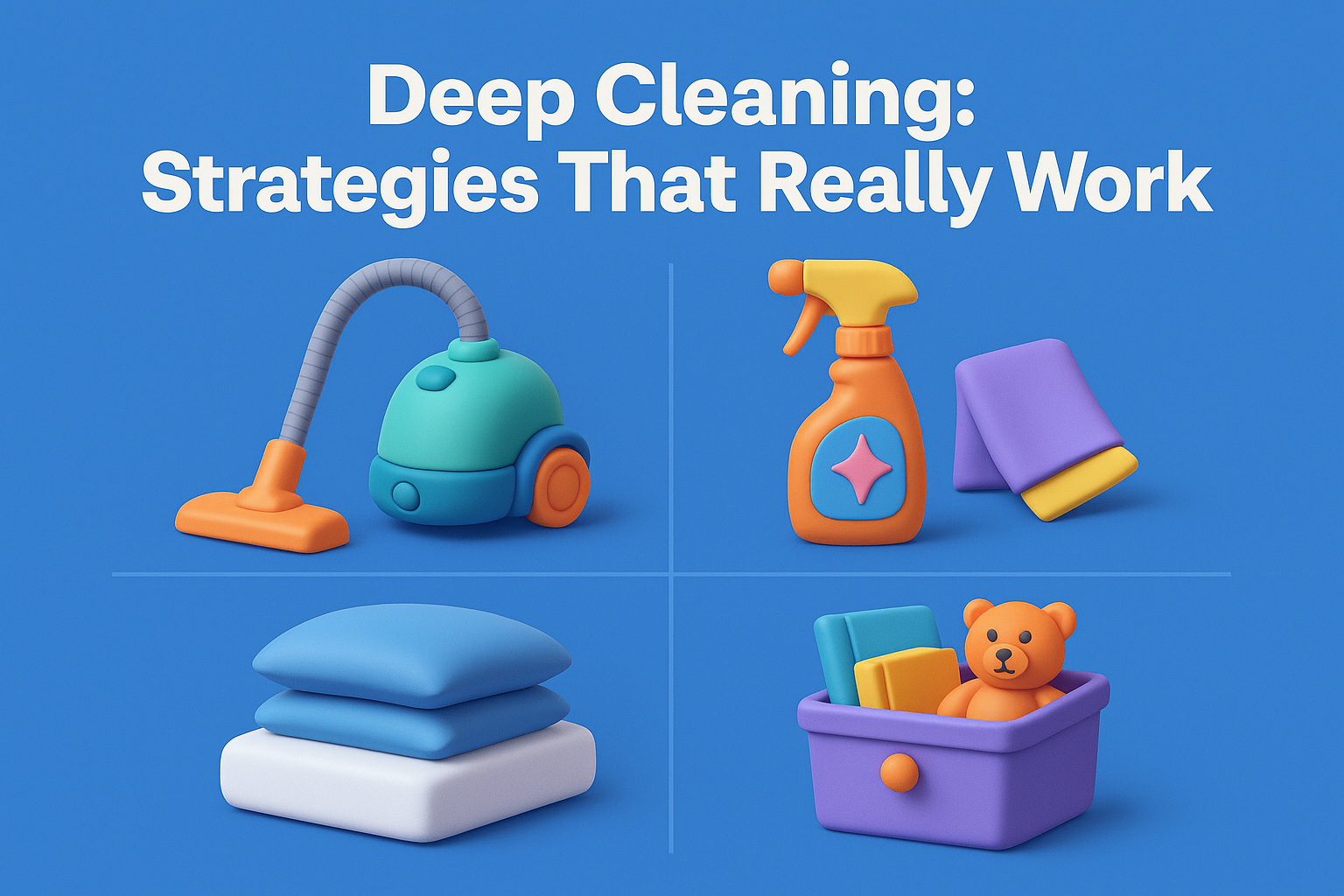
Deep Cleaning: Strategies That Really Work
Indoor cleaning isn’t just about aesthetics; it’s a health intervention. Poor cleaning habits allow allergens to accumulate, while proper methods significantly reduce exposures.
Vacuuming and Dusting
Use a vacuum cleaner with a HEPA filter or a special double‑thickness bag to capture fine particles. Vacuum carpets, rugs, and upholstered furniture at least once a week. When vacuuming or dusting, allergens become airborne, so wear a mask or, better yet, ask someone without allergies to do the cleaning.
For dusting, ditch feather dusters. Instead, use a damp microfiber cloth, which traps dust rather than spreading it around. Work from the highest surfaces downward to avoid re‑dirtying cleaned areas. Don’t forget less obvious spots like ceiling fans, baseboards, and top edges of picture frames.
Wet‑Vacuuming and Steam Cleaning
Dry vacuuming alone can’t remove all allergens. Health experts suggest that wet‑vacuuming or steam cleaning carpets not only washes away dust and pollen but also kills dust mites. A controlled study found that steam cleaning combined with vacuuming reduced dust‑mite allergen levels significantly and maintained lower levels for up to eight weeks, whereas vacuuming alone returned to baseline in four weeks. This makes a compelling case for incorporating professional steam cleaning into your cleaning routine.
Washing Bedding and Fabrics
Bedding is prime real estate for dust mites. The Mayo Clinic and AAAAI recommend encasing pillows, mattresses, and box springs in dust‑mite‑proof covers and washing sheets and blankets weekly in hot water – at least 130 °F (54 °C). Launder comforters and throw blankets, or choose hypoallergenic ones that can be washed easily. Don’t forget to launder stuffed animals, couch throws, and pillow covers regularly.
When possible, opt for hard flooring over wall‑to‑wall carpeting. If that’s not feasible, choose low‑pile or tight‑weave carpeting and vacuum it frequently. Use washable area rugs and toss them in the washer weekly.
De‑Clutter and Organize
Clutter collects dust. Keep knick‑knacks to a minimum; store books and magazines in closed cabinets or on shelves behind glass doors. Children’s toys and stuffed animals should be kept in plastic bins and washed often. Choose furniture made of wood, metal, or leather, which can be wiped clean easily, rather than fabric upholstery.
Control Humidity and Moisture
Dust mites love humidity above 50%. Maintain indoor relative humidity between 30% and 50%. Use a hygrometer to monitor humidity levels. If it’s too high, run a dehumidifier; if it’s too low (winter), consider a humidifier, but don’t exceed 50%. Ventilate bathrooms and kitchens with exhaust fans. Fix plumbing leaks immediately and wipe up condensation on windows to prevent mold growth. Store firewood outside to avoid bringing mold spores indoors.
When cleaning bathrooms, towel‑dry tubs and tile after each shower; scrub grout and faucets with a bleach solution or mildew remover. Replace moldy shower curtains, bathmats, and sponges frequently.
Use Safe Cleaning Products
Some cleaning products emit volatile organic compounds (VOCs) that can irritate sensitive lungs. Choose unscented or low‑VOC cleaners and avoid mixing chemicals. For a natural approach, try white vinegar or baking soda to clean surfaces; these simple agents kill many household germs without producing toxic fumes. When using bleach to clean mold, wear rubber gloves and a mask.
Pest Control
Cockroaches and mice produce allergenic droppings. Keep food in sealed containers, wipe kitchen counters and floors daily, and never leave pet food out overnight. Use trash cans with insect‑proof lids and empty them daily. If you notice pests, set traps or contact a licensed exterminator.
HVAC Maintenance and Air Purification
Your heating and cooling system plays a crucial role in indoor air quality. Replace or clean filters every one to three months, using filters rated MERV 11 or 13 for better allergen capture. Dirty filters not only circulate pollen and dust but also stress your HVAC system, reducing efficiency.
Consider installing a whole‑house air purifier. Some systems create ions that attach to airborne particles and draw them to filters. Others use UV lamps near the evaporator coil to kill mold and bacteria. Portable air purifiers with HEPA filters also help in specific rooms, place them in bedrooms or living rooms where you spend the most time.
Regular HVAC service is non‑negotiable. A technician can clean ducts, remove built‑up dust, calibrate humidity control, and allow proper airflow. This extends the life of your system and enhances indoor comfort.
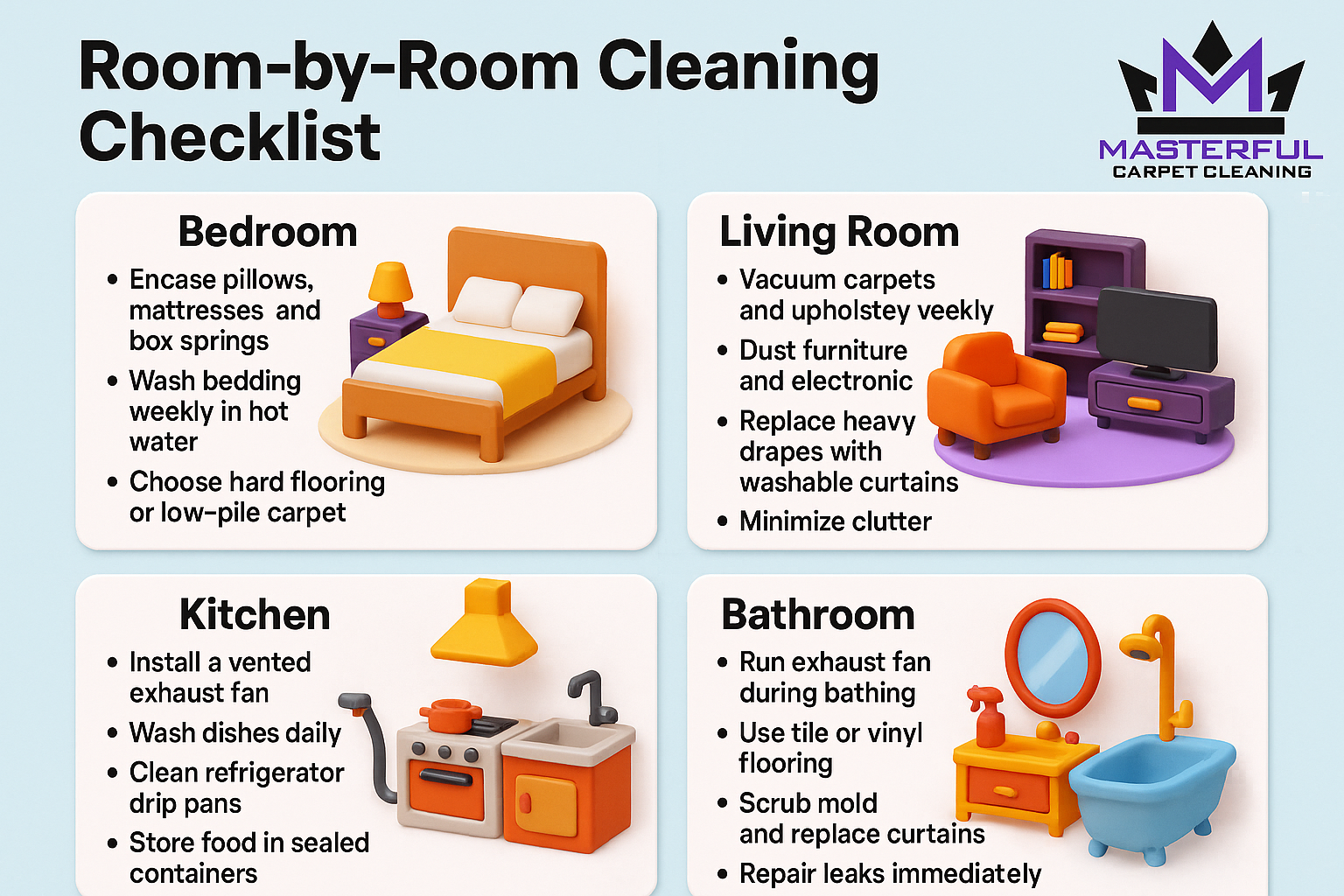
Room‑by‑Room Cleaning Checklist
To make home upkeep manageable, break tasks down by room. Here’s a concise reference:
Bedroom
- Encase pillows, mattresses, and box springs in dust‑mite‑proof covers.
- Wash bedding weekly in hot water; rotate two sets so you always have clean linens.
- Choose hard flooring or low‑pile carpet; vacuum and mop weekly.
- Keep pets out of the bedroom and store stuffed animals in plastic bins.
Living Room
- Vacuum carpets and upholstery weekly using a HEPA filter.
- Dust furniture and electronics with a damp cloth; don’t forget ceiling fans.
- Replace heavy drapes with washable curtains and launder seasonally.
- Minimize clutter; store books and collectibles behind glass or in cabinets.
Kitchen
- Install a vented exhaust fan over the stove; run it during and after cooking.
- Wash dishes daily; wipe counters and cabinets with detergent; check for plumbing leaks.
- Clean refrigerator drip pans and door seals to prevent mold.
- Store all food, including pet food, in sealed containers.
- Take out trash daily using a can with an insect‑proof lid.
Bathroom
- Run an exhaust fan during and after bathing to remove moisture.
- Use tile or vinyl flooring; avoid carpet.
- Remove wallpaper and paint walls with mold‑resistant enamel.
- Towel‑dry tubs and showers; scrub mold and replace moldy curtains or mats.
- Repair leaks immediately to prevent dampness.
Basement
- Remove water‑damaged or moldy carpets; choose concrete or vinyl flooring.
- Replace upholstered furniture with easy‑to‑clean materials (leather or wood).
- Use a dehumidifier and clean it weekly.
- Store seasonal items in plastic bins; install the clothes dryer to vent outside to reduce moisture.
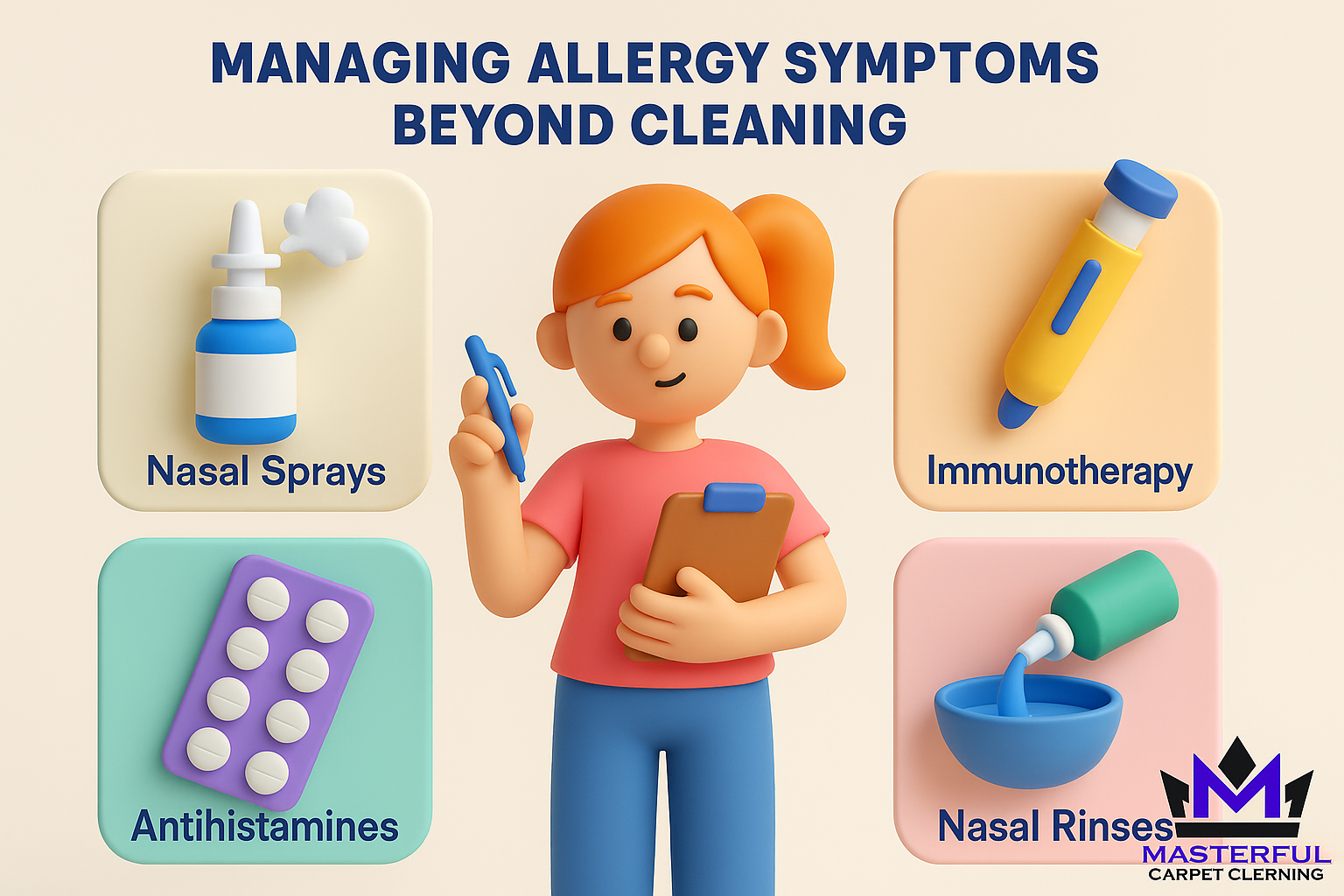
Managing Allergy Symptoms Beyond Cleaning
While environmental control dramatically reduces allergen exposure, sometimes it isn’t enough. Consult an allergist or ENT physician if you have persistent symptoms. They might recommend:
- Over‑the‑counter antihistamines or nasal corticosteroid sprays for symptom relief.
- Immunotherapy (allergy shots or sublingual tablets) to desensitize you to specific allergens over time.
- Saline nasal rinses to flush pollen out of your nasal passages.
- Epinephrine autoinjectors if you have severe allergic reactions (anaphylaxis) to certain allergens.
Always discuss medication with a healthcare provider to ensure safe and effective use.
Why Professional Carpet Cleaning Makes a Difference
Vacuuming helps, but it can’t reach the deeply embedded allergens clinging to carpet fibers. Carpets and rugs trap pollen, dust, dander, and mite waste. Over time, foot traffic grinds these particles deeper, and humidity can create a hospitable environment for mold.
Professional carpet cleaners use high‑temperature water, powerful suction, and commercial‑grade HEPA filtration. This combination removes debris that home vacuums cannot. Many companies also offer eco‑friendly cleaning solutions and protective coatings that repel dirt and allergens. Scheduling professional cleaning every six to twelve months, especially before peak pollen months, can drastically reduce indoor allergen load.
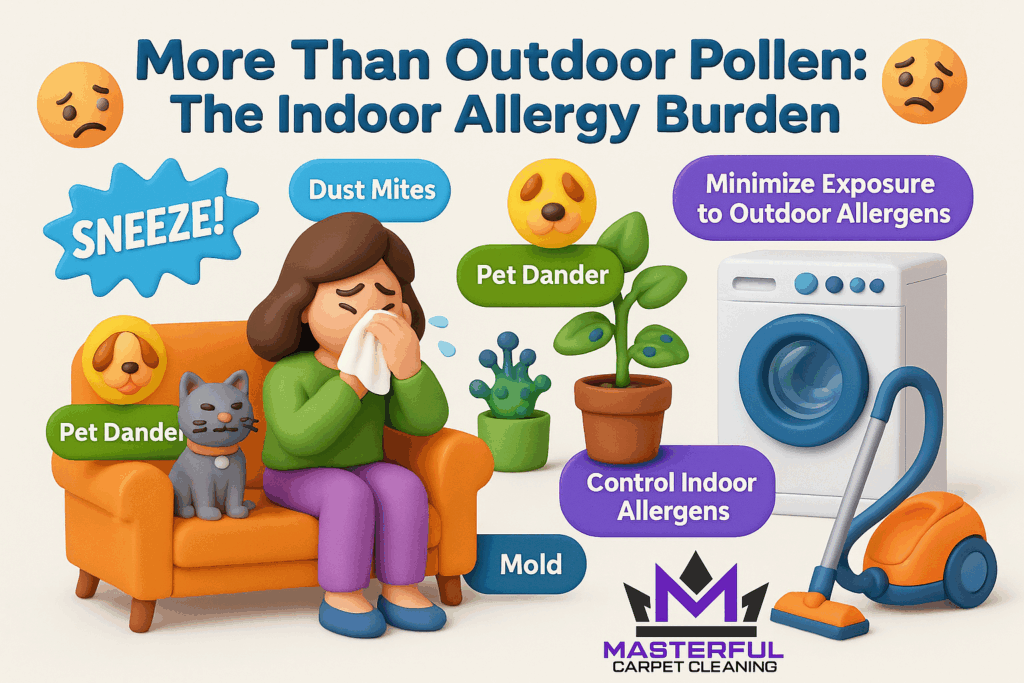
Taking a Holistic Approach
Tackling allergies isn’t a one‑and‑done process. It requires ongoing vigilance and a mix of strategies. By understanding local pollen patterns, minimizing pollen entry, adopting thorough cleaning practices, controlling humidity, and investing in professional help, you can transform your home into a sanctuary rather than a sneezing zone. As you implement these practices, remember to:
- Monitor your symptoms and note triggers in a diary.
- Track pollen counts and adjust activities accordingly.
- Rotate between different antihistamines if one stops working (per your doctor’s guidance).
- Schedule annual HVAC maintenance and biannual professional carpet cleaning.
- Replace bedding and pillows every few years to prevent dust‑mite buildup.
Breathing Easier in the Grass Seed Capital
Allergy season may feel relentless in Amity, but it doesn’t have to dominate your life. Armed with knowledge of local pollen cycles, common allergenic species, and proven cleaning methods, you can reclaim your home. Don’t underestimate the power of simple habits like removing your shoes, washing linens hot, and vacuuming with a HEPA filter. Pair those with professional services, and you’ll dramatically reduce your exposure to the allergens that cause itchy eyes and runny noses.
Ready to take the next step? Masterful Carpet Cleaning offers customized cleaning plans that tackle the unique challenges of Willamette Valley homes. When you need a deep steam clean before June’s grass pollen spike or want to prepare for autumn weed pollen, we’ve got your back. Reach out today and discover how clean carpets and improved indoor air quality can make your allergy season a little less itchy and a lot more comfortable.
As the Co-Owner of Masterful, Randy has been providing quality cleaning services to the Salem and Portland areas of Oregon for many years. He has built a reputation for excellence in the industry. His team take prides in using the latest cleaning techniques and technologies to deliver exceptional results every time. Author

